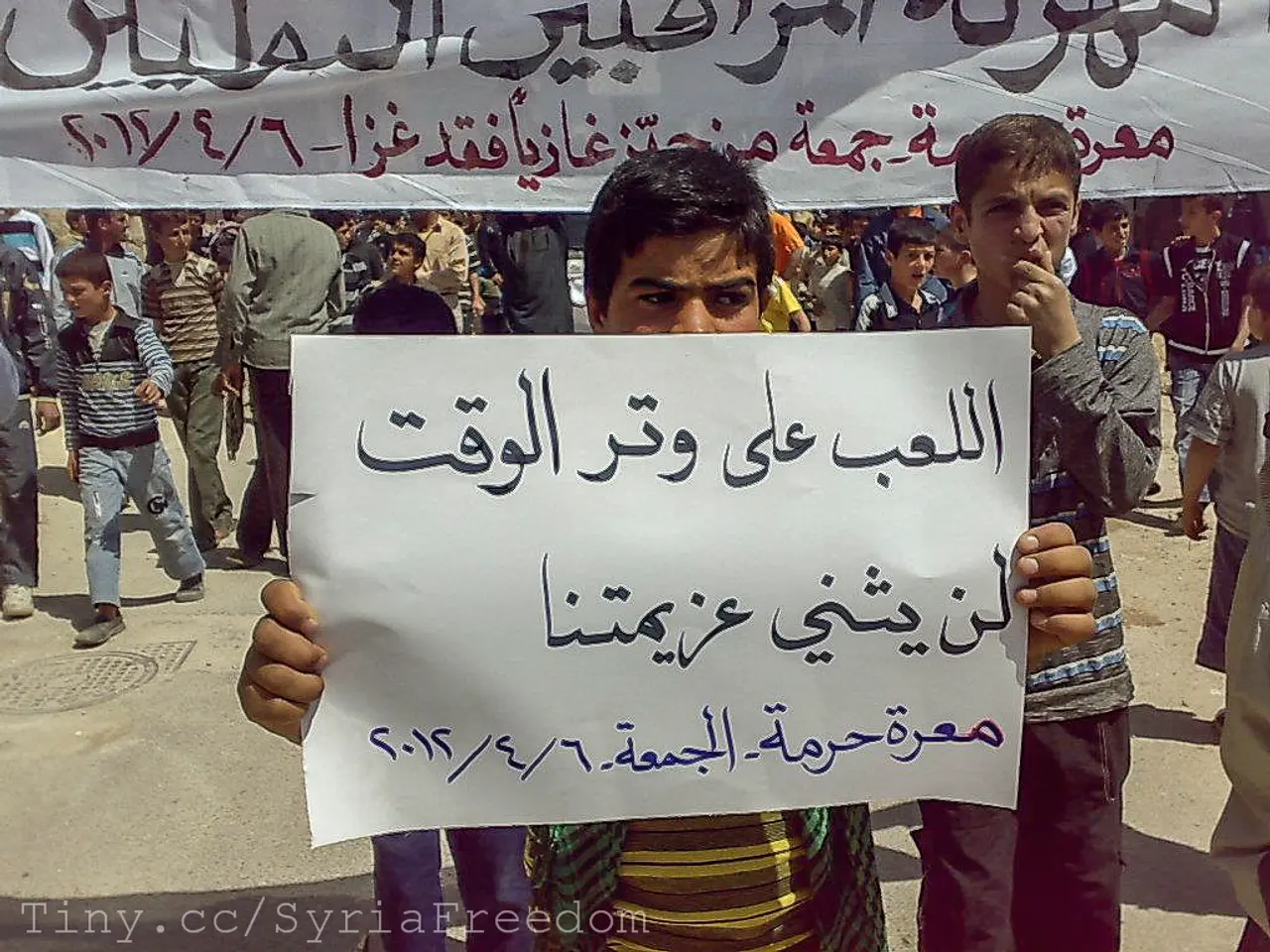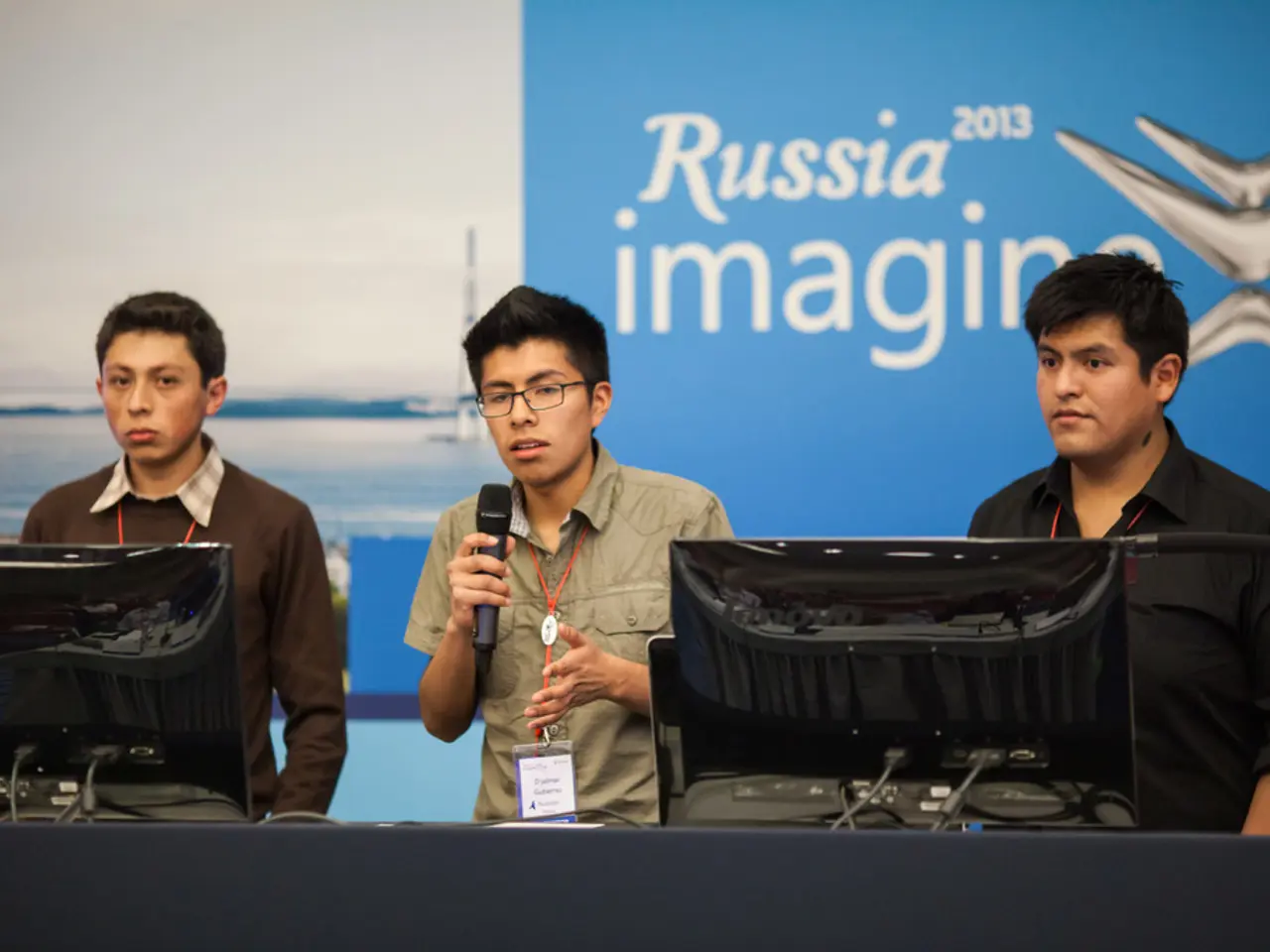B-52 Bombers Accompanied by South Korean and Japanese Military Fighters During Defense Leaders' Meeting
Trilateral Flight Reinforces Indo-Pacific Security
On July 11, the United States, South Korea, and Japan conducted a trilateral flight as part of ongoing efforts to enhance allied deterrence and response capabilities against North Korea’s advancing nuclear and missile threats.
The exercise, which involved two U.S. B-52H Stratofortress bombers, was escorted by two Japan Air Self-Defense Force F-2 fighters and two ROK Air Force KF-16s. Air Force Gen. Dan Caine, the Chairman of the Joint Chiefs of Staff, held a trilateral meeting with South Korean and Japanese military officers on the same day.
The joint declaration from the meeting emphasizes the importance of close trilateral cooperation among the U.S., South Korea, and Japan in addressing security challenges. The declaration specifically mentions the Korean Peninsula, the Indo-Pacific, and beyond as regions where trilateral security cooperation is crucial.
The joint declaration pledges to continue working together to respond to North Korea's threats and urges North Korea to immediately cease all unlawful activities to destabilize the Korean Peninsula, the Indo-Pacific, and beyond. The declaration does not single out China by name but seems to imply concerns about China’s actions in the Indo-Pacific region.
Strengthening Trilateral Cooperation
The exercises are part of ongoing efforts to deepen military cooperation among these three allies, showing a unified front in the face of North Korean provocations and broader regional security challenges, including concerns over China’s military buildup.
Demonstrating U.S. Commitment
Deploying the B-52H, a strategic bomber capable of both conventional and nuclear operations, signals a strong U.S. commitment to the defense of South Korea and Japan, underpinning deterrence amid heightened tensions with Pyongyang.
Improving Multinational Readiness
These joint flights train coordination and rapid response capabilities among U.S., South Korean, and Japanese air forces, enhancing interoperability and preparedness for potential crises in the region.
Regional Security Stabilization
By regularly conducting such exercises, the three nations aim to maintain stability and security in the Indo-Pacific, deterring North Korean aggression and addressing evolving threats across the broader region.
Thus, the trilateral operation underscores a strategic partnership aiming to balance regional power dynamics and ensure peace through combined military strength and readiness.
The deployment is occurring during the Resolute Force Pacific exercise, which is scheduled to involve more than 300 aircraft. The joint declaration reaffirms that trilateral security cooperation has played a key role in promoting peace and prosperity on the Korean Peninsula and in the Indo-Pacific.
In addition to the trilateral flight, the U.S., South Korea, and Japan have agreed to continue coordination toward the complete denuclearization of North Korea in accordance with relevant United Nations Security Council Resolutions (UNSCRs). The declaration also discusses the deployment of North Korean troops to Russia and the potential transfer of military technology from Russia to North Korea, condemning North Korea's continued development of unlawful nuclear and ballistic missile programs.
The joint declaration also highlights the importance of continuing to work together to respond to North Korea's threats and urges North Korea to immediately cease all unlawful activities to destabilize the Korean Peninsula, the Indo-Pacific, and beyond. Caine and the U.S. delegation also had bilateral meetings with both countries.
[1] The Diplomat
[2] Korea Herald
[3] Reuters
[4] Nikkei Asia
[5] CNN
- The trilateral flight involving the US, South Korea, and Japan is a demonstration of military partnership to reinforce Indo-Pacific security, particularly against North Korea's nuclear and missile threats.
- The exercise, which included the strategic bomber B-52H, signals a strong commitment by the US to the defense of its allies South Korea and Japan.
- The joint declaration from the trilateral meeting emphasizes the need for close cooperation among the US, South Korea, and Japan to address security challenges, including the Korean Peninsula and the Indo-Pacific.
- These joint flights aim to enhance interoperability and preparedness among the US Air Force, South Korean Air Force, and Japan Air Self-Defense Force for potential crises in the region.
- The trilateral cooperation aims to maintain stability and security in the Indo-Pacific, deterring North Korean aggression and addressing evolving threats across the broader region.
- The joint declaration reaffirms the role of trilateral security cooperation in promoting peace and prosperity in the Korean Peninsula and the Indo-Pacific, while also addressing concerns related to China's military buildup.
- The ongoing efforts to strengthen trilateral cooperation are part of the broader context of war-and-conflicts, politics, and general news of the Indo-Pacific region.






